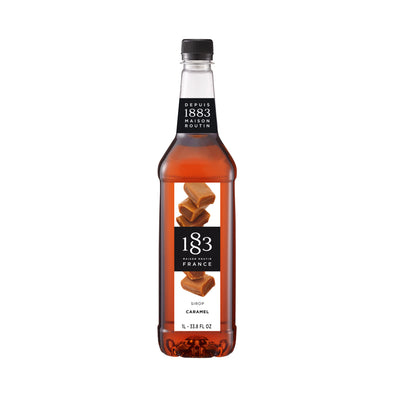National Tea Day - 21st April
Friday 21st April is National Tea Day when we Brits celebrate what is arguably our national beverage of choice! So, with that in mind let’s take a little look at the nation’s top three teas of choice.
Getting off the ground in 2016, National Tea Day was designed to celebrate tea in all its glorious forms by bringing tea drinkers and tea servers together in celebration under the banner of “Brew More. Do More,” with the aim of inspiring special moments with tea.
Britain’s love affair with tea began when the daughter of the Portuguese King John IV, Catherine de Braganza, married England’s Kind Charles II, in 1662.
Not only did Charles marry into one of the most powerful houses in Europe, which helped him pay off his ever-growing mountain of debt it also got him and his chums into the habit of taking tea…
Portugal, then a significant colonial power, had been trading in luxury goods from Asia for some time, which meant that the Portuguese and many of their European counterparts had a hankering for the finer things in life; including tea, which was seriously expensive and at the time was a serious way of showing off in aristocratic circles.
Catherine, as you might imagine, au fait with the fads and fashions of the day, quickly introduced the latest trend, the custom of taking tea to the English court. Despite being slow on the uptake we as a nation soon cottoned and the East India Company placed its first order for 100 pounds of China tea in 1664, by 1685, over 12,000 pounds required. Today we import a whopping 314 million pounds from around the globe, 100 million cuppas a day or 36 billion brews a year, or to put it another way 265 litres of tea for the average Brit each and every year!
So you see we may just have a little bit of a national obsession with tea, after all it is the perfect drink for pretty much every occasion… especially if there’s a slice of Victoria Sponge Cake to be enjoyed too!
Some of our top three teas:
Farrer’s English Breakfast:
As a nation we quaff an unfathomable amount of Black Tea and Farrer’s award-winning signature English Breakfast blend of fine teas hits the spot each and every time.
China is known as the birthplace of black tea. Until the 17th century, the main tea varieties that were drunk around the world were green and oolong. The story goes that the Chinese experimented by fermenting tea leaves as they tried to find a way of extending the storage life of tea. This fermentation process produced an oxidized, darker version of the leaves, which soon after became known as “black tea”. Although it has its origins in China, Black Tea was adopted by the British who imported into Europe in the 18th century. Like all other teas it was for a while the preserve of the wealthy, but as more and more tea was imported the cost dropped and it was quickly adopted by the rest of society becoming the mainstay of the English breakfast.
Farrer’s English Breakfast is a Black Tea, is mostly taken with milk, and invariably comes in teabag form and Farrer’s English Breakfast ticks that box. Perfect with or without milk this strong black tea is made to a 200-year-old secret recipe, perfectly blended each and every time to produce an enjoyable and refreshing brew.
Tasting Notes: This deep full-bodied tea packs a punch and is perfect for drinking at the start of the day. Renowned specially selected teas from India and China are combined to create Farrer’s unique blend of English Breakfast Tea, which is just perfect when served with milk. A wonderful tippy Assam gives it full body and deep golden colour, which is softened with Keemun and large leaf Ceylon teas.
Farrer’s Earl Grey:
Supposedly named after Charles Grey a member of the English aristocracy, this is the UK’s second most popular type of tea though its origins are a bit of a mystery!
We do know that Earl Grey was first referenced in tea catalogues in 1824, which may mean one fanciful story could fit the bill… the story goes that Earl Grey was sent as an envoy to China, during his travels he saved the life of a Mandarin’s son, as a reward the Mandarin ordered the creation of a unique blend of tea and that the recipe be gifted to the Earl so that he could create future batches. But there’s a glaring issue as this little tale doesn’t explain the addition of Italian Bergamot orange peel, which certainly wasn’t found in China at the time.
The sad reality is that unscrupulous tea merchants at the time took to disguising low quality teas with the addition of flavourings to lift their prices – as the most expensive China tea available at the time was a green tea called Fo Shou often referred to Bergamot tea because of its underlying aroma, sadly it’s likely that the reality is that simple.
Tasting Notes: This invigorating black tea is usually served without milk and is steeped for much longer than most other teas to allow the bergamot to circulate and the distinctive citrus notes to come to the fore.
Farrer’s Camomile Tea:
Chamomile is the common name for a flower from the daisy and sunflower family, which also as it happens includes the marigold. The plant’s name has ancient Greek origins, ‘khamaimelon’, which literally means ‘earth apple.’
Perhaps this is one of the reasons that for centuries this innocuous looking flower has been revered as a medicinal herb, used by the ancient Egyptians, Greeks and Romans in all sorts of medicinal tinctures and potions, to speed up healing and provide anti-bacterial support to the body’s immune system, as well as having a sedative and calming effect.
There are two main types of Camomile grown to be turned into teas, and these are Roman and German varieties. Roman Camomile, also known as Garden Camomile and English Camomile is native to Europe and North Africa, reputedly getting its Roman associations because it was found growing in the ruins of the Colosseum in Rome in 1598 by a British botanist who introduced it to English brewers who cultivated it commercially as a bittering agent for use brewing wheat beers, earning it another name a little later on ‘English Camomile,’ a practice which still goes on to this day, though generally in small artisan breweries.
German Camomile or wild Camomile as it’s known grows in western Europe and Asia and is different to Roman Camomile in the size of the plants. Roman is low growing and spreads along the ground, whereas German, by contrast, grows up right and can grow to around two feet in height. The other main difference is that Roman leaves are grey green colour and that each stem produces multiple flowers. German Camomile is has light green leaves, looks a bit like a fern and produces a single flower on each stem. Otherwise they are pretty much the same plant they just belong to a different species strands and we really don’t want to get into that as it gets pretty technical.
Tasting Notes: This refreshing, elegant, subtly sweet floral tea is made from whole chamomile flowers. Bright yellow in colour, this tea has notes of honey, pineapple and sweet citrus, is totally caffeine free and can be drunk at any time of day. Chamomile is well known for it’s calming effects, but it is also a perfect digestive, making it just the thing to drink after a hearty meal.








